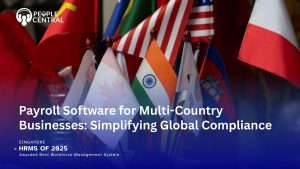In the ever-changing business landscape in Singapore, comprehension of value-added tax (VAT ) -locally referred to as goods and services tax-is paramount to enjoying the advantage of businesses operating in such a city-state arena. This guide provides particulars that enable you to confidently confront the taxing puzzle of compliance.
What is VAT/GST in Singapore?
GST in Singapore is a consumption type of a broad-based tax levied on the import of goods, provision of services, or sale of goods in Singapore. At 8%, this tax rate falls squarely within Singapore’s strong tax structure, which is a major source of revenue for the nation.
GST Registration Requirements
All businesses must register for Goods and Services Taxes if the taxable turnover for the last 12 months exceeds SGD 1 million or is expected to exceed SGD 1 million in the next 12 months. However, businesses with turnover below this threshold may also register voluntarily.
Other Key Criteria of Registration:
- Annual turnover threshold of SGD 1 million
- Mandatory for businesses meeting some prescribed revenue conditions
- Option for voluntary registration for smaller companies.
Also Read : Navigating the CDAC Contribution Rate: A Comprehensive Overview
VAT Singapore/GST: Filing Returns in Singapore
Filing Process
GST returns are usually filed via the online GST system set up by the Inland Revenue Authority of Singapore on a quarterly basis. The businesses are required to file their returns within one month from the date following the end of each accounting period.
Required Documents
- Surrounding Documents
- Sales and purchase invoices
- Maintenance of accounting records
- Calculating worksheets for GST
- Supporting financial documents
Calculating GST
The standard GST calculation comes down to the following step:
- Identification of taxable supplies;
- Determination of GST amount;
- Claiming input tax credits;
- Reporting the net GST payable.
The applicable tax rates are:
- Standard rate of 8% (with effect from 2024);
- Zero-rated supplies attract 0% GST;
- Exempt supplies exempted from GST.
Also Read : IRAS Tax Filing Tips For Singapore 2025
VAT Singapore: Common Compliance Challenges
Input Tax Recovery
A business can recover input taxes on purchases of goods and services for business purposes, but certain restrictions do apply, and adequate documentation is a must.
Record Keeping
Ensure proper, detailed records have been kept for at least 5 years, to accompany any audits that may follow.
Penalties for Non-Compliance
Failure to comply with the requirements set out by the GST Act may incur:
- Financial Penalties
- Interest Charges
- Legal consequences
Compliance Checklist Illustration
- Graphic of a clipboard with GST compliance checkpoints (mentioned above)
- Minimalist design with icons representing documentation, filing, and tax calculations

General Guidelines for VAT/GST Management
- Keep updated with changes in the legislation.
- Tighten and stabilize fiscal structures.
- Pursue in-house auditing.
- Use the counsel of external experts on taxation as and when needed.
Some Recent Developments
Singapore is set to increase its GST rate to 9% in the near future, highlighting the importance of staying informed about tax regulations.
In Conclusion
Proper management of VAT/GST in Singapore requires much time and hard work. Perhaps one has to place a considerable level of fineness on all details and maintain an active knowledge of local tax regulations. If it is any consolation, the business should master tax administration accordingly.
Disclaimer: Tax regulations can change. Always consult with a qualified tax professional for the most current advice specific to your business situation.








 5
5


























